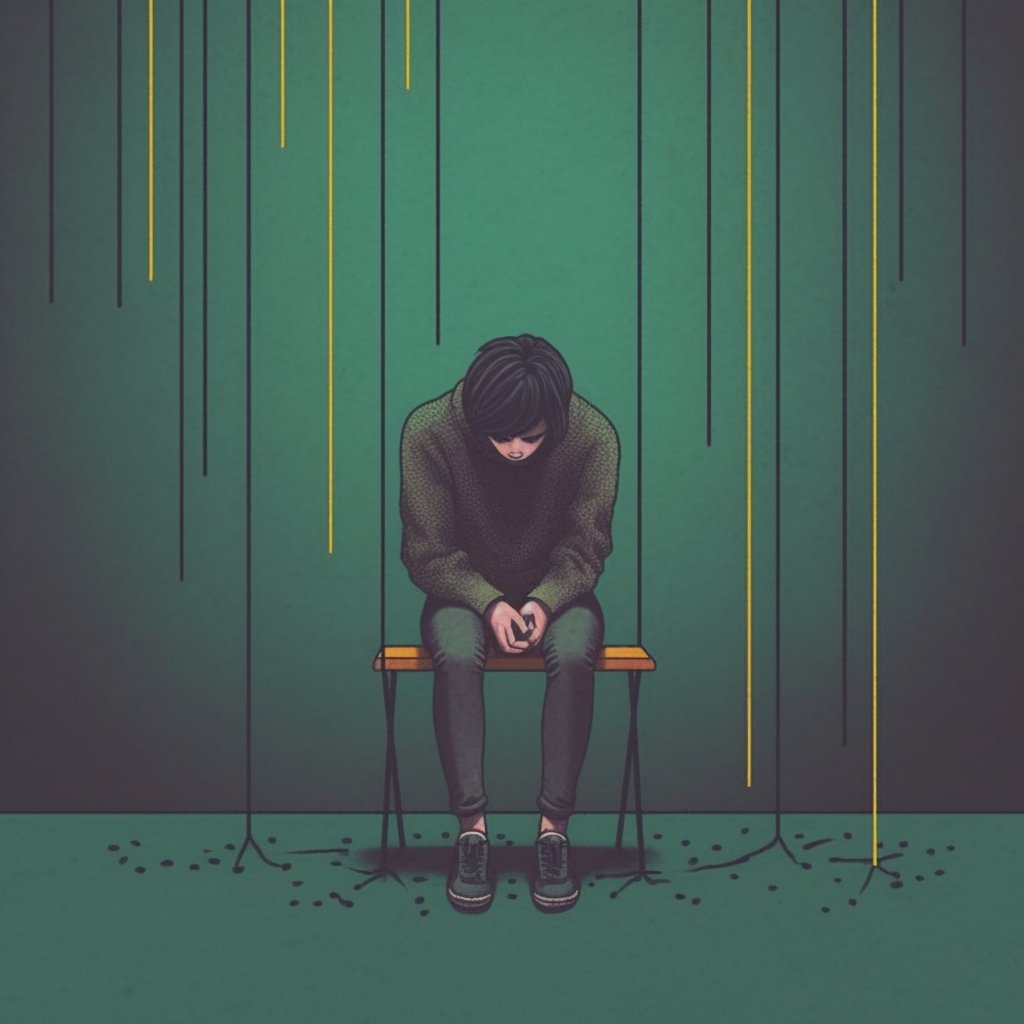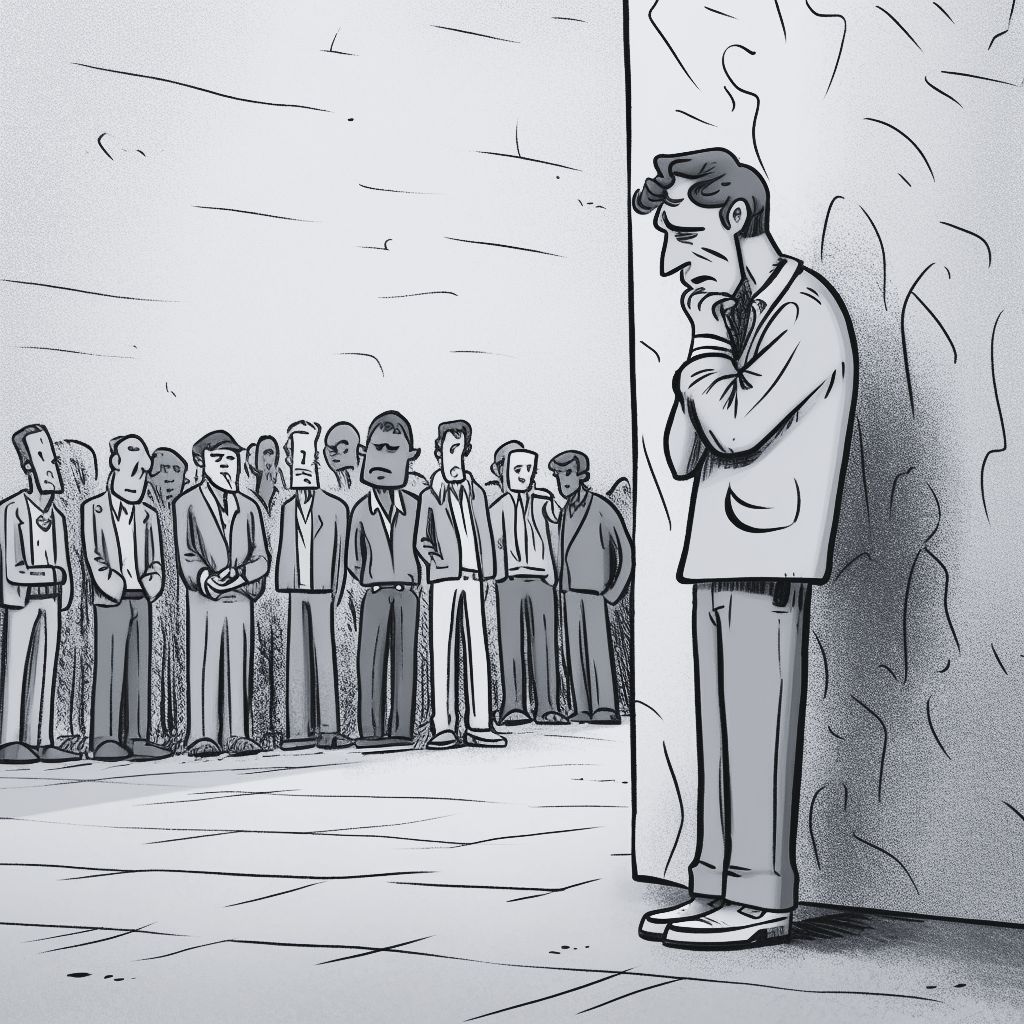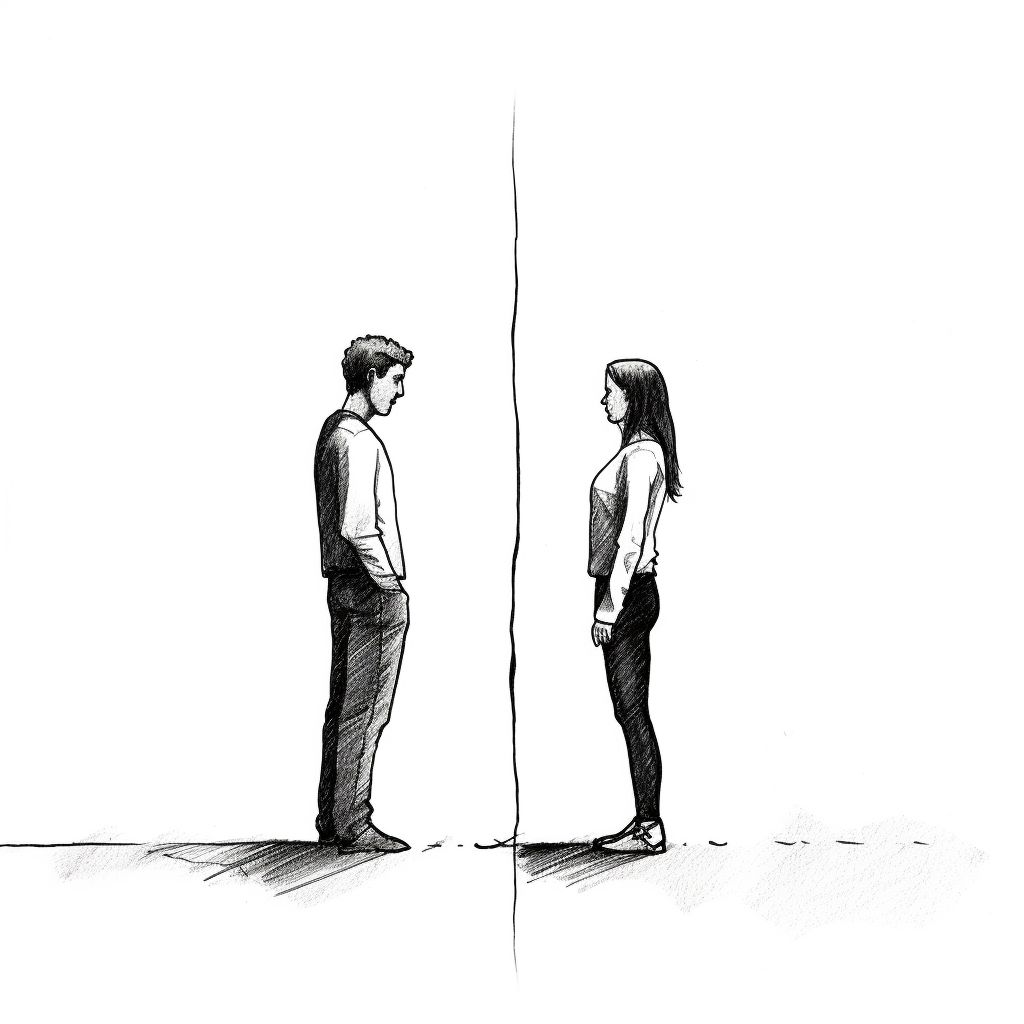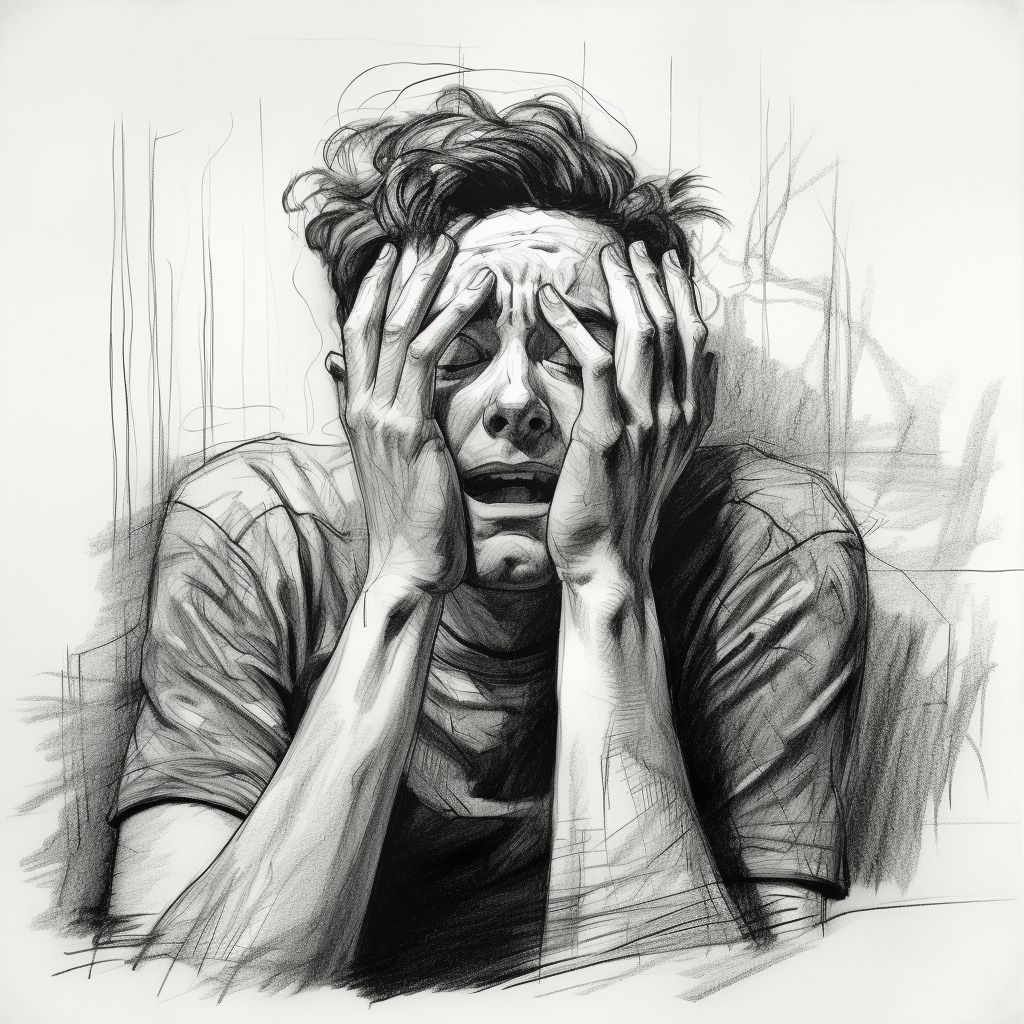Intersection of BPD and Anxiety: How to Cope

BPD and anxiety, often encountered together, create a unique set of challenges for individuals. Borderline Personality Disorder (BPD) and anxiety, while distinct conditions, share a noteworthy relationship. BPD is characterized by unstable moods, self-image, and interpersonal relationships. Anxiety, on the other hand, encompasses excessive worry and fear. The connection lies in how BPD can trigger and intensify various forms of anxiety. It’s like a tandem struggle, with BPD amplifying the emotional turbulence associated with anxiety.
In this article, we will explore this intricate relationship, delving into how BPD and anxiety intersect, and the impact it has on the lives of those affected. Understanding this connection is a vital step towards effective management and support.
BPD and Anxiety Disorder
BPD, at its core, is a complex condition marked by unstable emotions, self-image, and relationships. Those with BPD may experience intense mood swings, impulsivity, and difficulty in maintaining stable interpersonal connections. Anxiety Disorder, on the other hand, revolves around persistent feelings of apprehension, fear, and excessive worry. This can manifest as generalized anxiety, social anxiety, or specific phobias.
The relationship between BPD and Anxiety Disorder is multifaceted. Individuals with BPD often grapple with heightened anxiety due to their fear of abandonment and emotional instability. The uncertainty surrounding relationships and self-identity can trigger anxiety symptoms, making it a common comorbidity. Anxiety can further intensify BPD symptoms, creating a feedback loop of emotional turmoil.
This intertwining of BPD and anxiety means that treatment approaches need to address both aspects. It’s essential to recognize that while they are distinct conditions, they often coexist and influence each other, making diagnosis and treatment a challenging but necessary journey for those affected.
| Related: Myths about BPD
BPD and Social Anxiety

Social anxiety, characterized by intense fear and self-consciousness in social situations, often dovetails with BPD. Individuals with BPD may experience an amplified fear of rejection and abandonment, which, in turn, fuels social anxiety. This fear can make even routine social interactions feel like insurmountable obstacles.
The challenges for individuals dealing with both BPD and social anxiety are multifaceted. They may find it difficult to form and maintain relationships due to the fear of judgment or abandonment. This can lead to isolation and further intensify symptoms of BPD. In social situations, the constant worry about how they are perceived can be emotionally exhausting, contributing to the emotional instability that characterizes BPD.
| Discover; Nutrition and Anxiety | The Impact of Diet on Anxiety Disorder
BPD and Relationship Anxiety
The connection between Borderline Personality Disorder (BPD) and relationship anxiety is intricate and profound. BPD’s hallmark features, such as intense fear of abandonment and fluctuating self-identity, often lead to heightened relationship anxiety, casting a shadow over personal connections.
Imagine constantly feeling like the ground beneath your feet is shifting. For individuals with BPD, this is the emotional reality they contend with. The fear of abandonment can be all-encompassing, making every interaction with a loved one a potential source of anxiety. The anxiety often stems from the deep-rooted belief that they are unlovable or destined to be abandoned, which can trigger a self-fulfilling prophecy.
In relationships, BPD can manifest in ways that are challenging for both individuals involved. There may be rapid shifts between idealization and devaluation of the partner, leading to emotional rollercoasters. Impulsivity, another BPD trait, can result in impulsive decisions that strain relationships further.
For instance, someone with BPD might go from deeply loving their partner one moment to feeling overwhelmed and pushing them away the next. This erratic behavior can be baffling and distressing for the partner, perpetuating a cycle of relationship anxiety.
BPD and Separation Anxiety

For individuals with BPD, the fear of abandonment is a constant companion. This fear extends beyond romantic relationships and can encompass family and friends. When faced with separation, it can trigger intense emotional distress, akin to the feeling of impending loss. The thought of being alone can evoke profound anxiety, often accompanied by impulsive behaviors to prevent the separation or alleviate the distress.
These individuals might go to great lengths to maintain contact or manipulate situations to ensure their loved ones don’t leave. This can lead to unhealthy and unsustainable patterns in relationships, intensifying the cycle of separation anxiety.
BPD, Anxiety, and Depression
Individuals with BPD often grapple with intense mood swings, impulsivity, and fear of abandonment—fertile ground for anxiety and depression to take root. Anxiety can magnify the fear and uncertainty inherent in BPD, while depression can result from the emotional turmoil and struggles with self-identity that BPD brings.
The effects of this interplay can be profound. Anxiety can keep individuals in a perpetual state of alertness, which is mentally and physically exhausting. When coupled with BPD’s emotional instability, this heightened anxiety can contribute to deeper and more persistent depressive episodes. Conversely, the lethargy and hopelessness often seen in depression can exacerbate BPD symptoms, making self-control and relationship management even more challenging.
BPD Panic Attacks
Panic attacks are no stranger to the complex world of BPD and anxiety. These episodes are intense, often frightening bursts of fear or discomfort that can be all-encompassing.

In the context of BPD and anxiety, panic attacks are closely related. They tend to be triggered by situations or thoughts that amplify the underlying fears and emotional turbulence that characterizes BPD. During a BPD-related panic attack, individuals might experience a racing heart, shortness of breath, sweating, trembling, and a profound sense of impending doom.
The relationship between BPD and anxiety attacks is a two-way street. The emotional rollercoaster that is BPD can act as fertile ground for anxiety, and in response, panic attacks may manifest as a result of this heightened anxiety. Conversely, these panic attacks can further intensify the emotional instability and fear of abandonment that is often associated with BPD.
BPD Intrusive Thoughts
Individuals with BPD often experience intrusive thoughts that stem from their fear of abandonment and emotional instability. These thoughts may involve scenarios of rejection or betrayal, and they can be profoundly distressing. In some cases, these thoughts may also lead to impulsive behaviors.
Managing intrusive thoughts is crucial for those living with BPD and anxiety. One effective strategy is mindfulness, which involves acknowledging these thoughts without judgment and then letting them go. Cognitive-behavioral therapy (CBT) can also help identify and challenge irrational beliefs that underlie these thoughts.
BPD and Anxiety Treatment

Effective treatment for individuals with BPD and anxiety often involves a combination of medication and therapy.
- Medication: Medication can play a role in managing the symptoms of BPD and anxiety. Commonly prescribed medications may include antidepressants, anti-anxiety medications, and mood stabilizers. These drugs can help alleviate some of the emotional turmoil and anxiety associated with BPD. It’s crucial to consult a qualified mental health professional to determine the most suitable medication for an individual’s specific needs.
- Therapy: Therapy is a cornerstone in the treatment of BPD and anxiety. Dialectical Behavior Therapy (DBT) has shown promise as a therapeutic approach. DBT helps individuals learn to regulate emotions, cope with stress, and improve relationships. It offers practical skills to manage the emotional rollercoaster that is common in BPD.
- Other therapeutic approaches like Cognitive-Behavioral Therapy (CBT) can also be beneficial. CBT helps individuals identify and modify negative thought patterns and behaviors, which can be particularly helpful for managing anxiety and mood instability.
| Read more: Art Therapy for Anxiety | Drawing Ideas to Reduce Anxiety
HealWiser’s Last Piece of Advice
Remember, there is hope. Many individuals facing BPD and anxiety find strength and resilience within themselves. Through treatment and self-discovery, a fulfilling and emotionally balanced life is not only possible but achievable. These challenges do not define you; they are simply part of your journey, and there’s a path toward a brighter and more stable future.
Sharing your experiences can provide valuable insights and emotional support. So…
…share your story with Heal Wiser and others in the comments section below this post.






